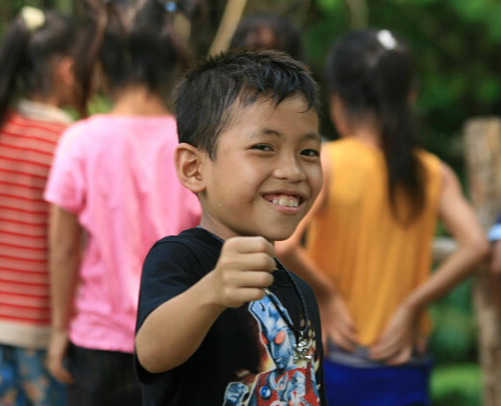First of all, we need to understand the phone number system in Myanmar and how to make a phone call from/to Myanmar.
It is now the 21th century, and you need to connect to the world every day.
You want to call your family and friends at home to share a picture of the beautiful landscapes or the wonderful people you met.
Or sometimes you need to finish your urgent business.
This will lead to the popular questions:
- How can you call back home from Myanmar?
- How can you connect to the internet in Myanmar?
- And what is the best travel SIM card for tourist in Myanmar?
We make it all clear below
Phone Call in Myanmar
Myanmar phone number
Land lines number
To dial a land line in Myanmar all over the country, the format is IDD + 95 (Country Code) + Area Code + Recipient's Number. The area code is 1-or-2 digit long, followed by a 7-digit phone number. Calls made from outside Myanmar must omit the prefix 0. Therefore, to call a land line number in Yangon from other countries, dialing begins with +95 1 followed by 7 digits. Examples as below:
- In Yangon, the format is 01 MMM MMMM e.g. 01 243 5774
- In Mandalay, the format is 02 MMM MMMM e.g. 02 403 3655
- In Nay Pyi Taw, the format is 067 MMM MMMM e.g. 067 435 3241
- In Maubin, the format is 045 MMM MMMM e.g. 045307--
Myanmar Country Calling Code: 95
Provincial/Area Calling Code as below table (Add to Landline Number Only)
| Bassein | 42 | Meiktila | 64 | Prome | 53 |
| Magwe | 63 | Mawlamyine | 57 | Sittwe | 43 |
| Mandalay | 2 | Pegu | 52 | Yangon | 1 |
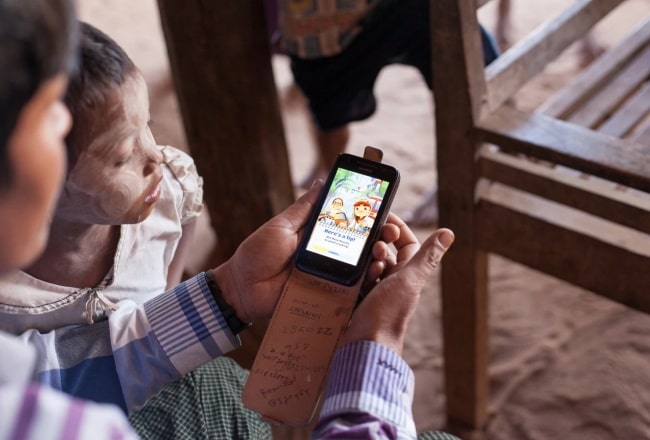
Mobile Phone Number
There are four mobile operators in Myanmar. All mobile operators’ numbers start with 09. All of them have the same format except MPT.
- For Telenor, Ooredoo, and Mytel, they have 11 digits with the prefix.
- Telenor start with 097 e.g. 09790000979
- Ooredoo start with 099 e.g. 09970000234
- Mytel start with 096 e.g. 09690000966
How to make a phone call?
To Myanmar
| Exit Code | Country Code | Area Code | Local Number |
|---|---|---|---|
| ## | 95 | ### | ###### |
AREA CODE
This is the code for a part of the country. It is usually a general area or a city. Some countries are not large enough to warrant their own code, so will have the country code 1 and use the area code to define the country.
You can check the full list of area codes in Myanmar in the Land line number part
If there is no area code (i.e. the mobile number), just ignore and come directly to the number.
For example, in case you want to call the mobile number: 096-90000966, just dial: Your country exit code + (95-31-90000966).
Below are some examples
- From USA & Canada: 011 95-31-90000966
- From France: 00 95-31-90000966
- From German: 00 95-31-90000966
- From UK: 00 95-31-90000966
- From Belgium: 00 95-31-90000966
- From Switzerland: 00 95-31-90000966
- From Australia: 0011 95-31-90000966
The numbers in red are the country exit code. For the full list of country EXIT CODE, please check HERE
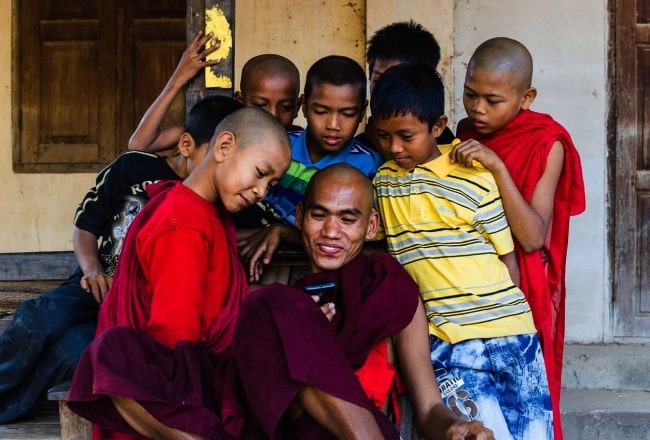
From Myanmar
| Exit Code | Country Code | Area Code | Local Number |
|---|---|---|---|
| 00 | ### | ### | ###### |
- Myanmar EXIT CODE is 00
- Then type your country code + your area code (if any) + the number that you want to call
Below are some examples (add area code to the telephone number if needed)
- To USA & Canada: 00 + 1 + Telephone number
- To France: 00 + 33 + Telephone number
- To German: 00 + 49 + Telephone number
- To UK: 00 + 44 + Telephone number
- To Belgium: 00 + 32 + Telephone number
- To Switzerland: 00 + 41 + Telephone number
- To Australia: 00 + 61 + Telephone number
The numbers in red are the country code. For the full list of different country phone codes, please check HERE
Internet in Myanmar
The internet in Myanmar (formerly known as Burma) has been available since 2000 when the first Internet connections were established. Beginning in September 2011, the historically pervasive levels of Internet censorship in Burma were significantly reduced. Prior to September 2011 the military government worked aggressively to limit and control Internet access through software-based censorship, infrastructure and technical constraints, and laws and regulations with large fines and lengthy prison sentences for violators.
In 2015, the internet users significantly increased to 12.6% with the introduction of faster mobile 3G internet by transnational telecommunication companies, Telenor Myanmar and Ooredoo Myanmar, and later joined by national Myanmar Post and Telecommunications (MPT). While the internet situation in Myanmar has constantly been evolving since its introduction in 2010 and reduction of censorship in 2011, laws such as the 2013 Telecommunications Law continue to restrict citizens from total freedom online. Despite restrictions, internet penetration continues to grow across the country.
Myanmar's top-level domain is '.mm'.
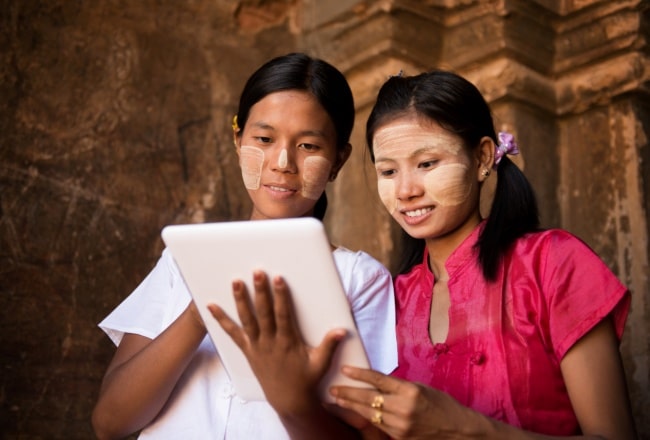
Internet Speed
Until the end of July 2020, Singapore has been in the highest position in the Global Index of internet speed ranking with its download speed 213.18 Mbps, being the fastest of all, where the global average download speed is 81.46 Mbps and that of Myanmar is 57.97 Mbps. Concerning the upload speed, Singapore’s speed is 220.46 Mbps while global average speed is 42.63 Mbps and that of Myanmar is 43.61 Mbps. As of latency, Singapore’s rate is 13ms while the global average rate is 22ms and Myanmar’s rate is 10 ms.
Access and usage
Service providers
Yatanarpon Teleport, 5BB Broadband, satellite internet provider Skynet, the state-owned Myanmar Post and Telecommunication (MPT), WeLink Myanmar, Myanmar Net, Myanmar Speednet, AGB Communication, Fortune Broadband and Kinetic Myanmar Technology are the Internet service providers in Yangon and Mandalay.
Before the democratization in 2011, Internet cafés were common access center for internet users in the country and most use different pieces of software to bypass the government's proxy servers. The popularity of Internet cafés declined with the emergence of cheap mobile internet with the improvement in telecommunication infrastructure following the liberalization. However, they are still widely present, especially in Yangon and Mandalay and are used extensively for blogging and other activities. Internet on mobile devices are widely used today.
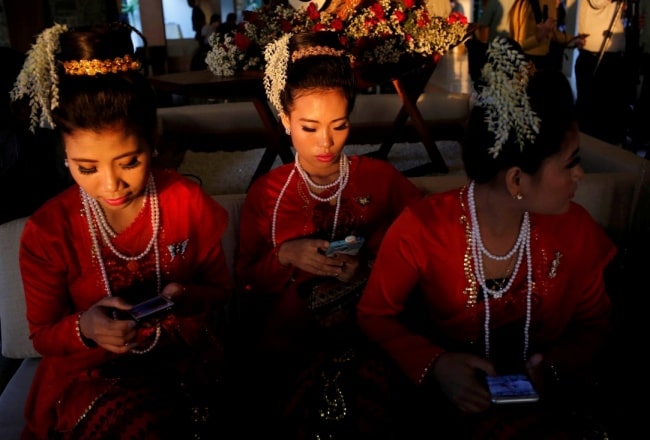
Internet in other towns and rural areas
The internet access for home use in other towns except Yangon and Mandalay is only available through ADSL technology, provided by MPT. However, the pricing is prohibitively expensive for most customers. For ADSL, MPT's fixed-line phone (new installation) price is 325,000 Myanmar Kyat (US$240 estimated) in 2017.
MPT's ADSL Initial Setup Fee is 50,000 Myanmar Kyat (US$37 estimated) without a CPE. Annual Fee is 50,000 Myanmar Kyat (US$37 estimated), and Monthly fee for 512kbit/s (lowest bandwidth) is 17,000 Myanmar Kyat (US$13 estimated) and fee for 2.5Mbit/s (highest bandwidth) is 80,000 Myanmar Kyat (US$60 estimated). FTTH internet is not available in towns.
Internet penetration
Myanmar has a very low Internet penetration rate due to government restrictions on pricing and deliberate lack of facilities and infrastructure. According to World Internet Stats statistics as of June 2012, the country had over 534,930 Internet users (1.0% of the population) with the vast majority of the users hailing from the two largest cities, Yangon and Mandalay.
Although 42 cities across the country have access to the Internet, the number of users outside Yangon and Mandalay is just over 10,000. In 2012, most of the country's 40,000 Internet connections were ADSL circuits, followed by dial-up, satellite terminal, and WiMax.
MPT is also undertaking a trial of fibre-to-the-home in Mandalay, and plans to roll out a similar trial in Yangon. On 22 July 2015 the CEO of Telenor Myanmar announced that 55% of Telenor's 10 million mobile subscribers were data users, increasing the low estimate of internet users in Myanmar to at least 5.5 million.
Internet World Statistics reported in Nov 2015 that penetration was 12.6%. As of 30 June 2017 Myanmar has 13,747,506 internet users, 25.1% population penetration, and 11,000,000 Facebook users.
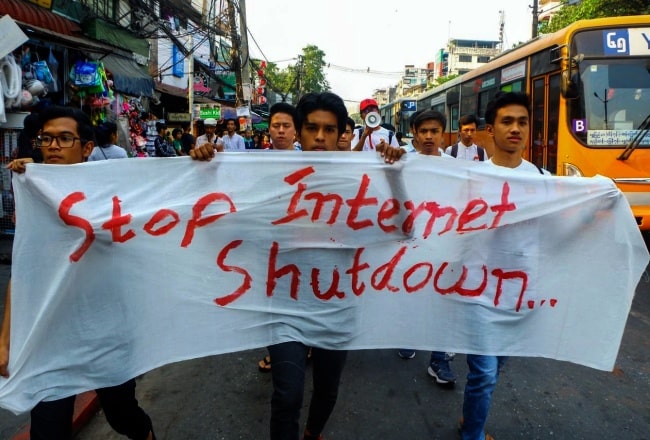
Mobile Phone Usage
With the growth of internet use in Myanmar and opening of telecommunications, the price of SIM cards is decreasing, going from "~245,000 kyats (reported as US$250) in 2013 to ~1,542 kyats (reported as US$1.50) in 2014." Even though costs still are high for Myanmar, ranking 148th out of 188 of countries on the United Nations Development Programme's Human Development Index that have 66.9% of the country making less than 2,622 kyats per day ($2.00 USD), Mobile Media & Communication found that "Myanmar people are willing to pay for mobiles, with over 18.1 million active SIM cards."
VSAT Service Providers
With diver geography of Myanmar, having VSAT Serviders is a natural thing. While IPStar services were being delivered earlier now few of the commercial VSAT Service providers has emerged in 2016/2017. Below is the list:
- SEANET (SOUTHEASTASIANET TECHNOLOGIES Myanmar Co. Ltd) - Leading VSAT Services provide with complete suites of Services and Teleport right within Yangon.
Font Conflicts
Amid the growth of internet access across the country, ACM Computers & Society found that the Burmese-text font, Zawgyi, "may impede the digital potential of the country." Zawgyi, considered the most widely-used font throughout Myanmar, is not Unicode, meaning that it does not use "an intelligent rendering engine to make sure each script element has one and only one code point." This can stop websites with Zawgyi from being accessible from other countries or people using Unicode.
ACM Computers & Society also claimed that Zawgyi has difficulty typing certain ethnic languages of Myanmar, meaning that "Myanmar’s ethnic languages cannot be represented or co-exist with Burmese languages when the non-Unicode Zawgyi font is used."
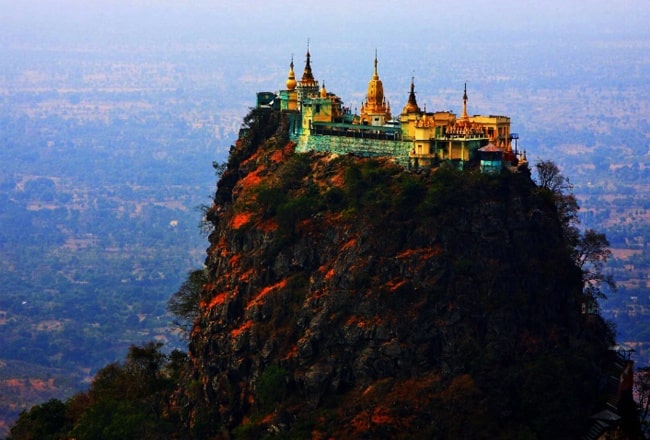
While Unicode began to spread through Myanmar with initiatives such as including both Zawgyi and Unicode on Android versions 4.4 and newer, Lorian Leong of Mobile Media & Communication found that the lack of Unicode "influences users’ access and dependency on others to help install such services, and creates constraints and limitations to content."
Blogging
An October 2010 survey found that blogging is the fastest growing type of Internet use in Myanmar, with a 25 percent increase from 2009. A non-scientific survey taken in 2009 found that:
- Blogs focus on entertainment (14%), technology, computers, and the Internet (17%), books and literature (9%), news (6%), hobbies and travel (6%), politics (5%), and religion (4%), among other topics;
- 52 percent of Burmese bloggers write from Burma and 48 percent write from abroad;
- 72% of bloggers are men and 27% are women;
- 77% of bloggers are single and 14% are married;
- 35 percent of bloggers are 26 to 30 years old and 29 percent are 21 to 25 years old;
- 80 percent blog in Burmese, while 8 percent blog in English, 10 percent write in both languages, and the rest use ethnic minority languages such as Kachin, Karen, and Chin.

Social Media
According to the Development Institute of the Russian Federation, Myanmar "still [has] social media penetration levels below 10%." Despite this, internet and social media usage is still rising and influential, with Facebook usage among a variety of people in Myanmar, including farmers. While social media usage spreads, people using platforms such as Facebook use it for controversially both good and bad reasons.
According to Reuters, "U.N. human rights experts investigating a possible genocide in Myanmar said [...] that Facebook had played a role in spreading hate speech there." The plausible genocide with the Rohingya Muslims was found to be affected by Facebook, as Reuters found that it was "used to convey public messages but we know that the ultra-nationalist Buddhists have their own Facebooks and are really inciting a lot of violence and a lot of hatred against the Rohingya or other ethnic minorities."
With the growth of social media and its capability to spread both news and opinionated information, some information managers in Myanmar are learning about the potential of social media through a workshop run by UNESCO, Myanmar Information Management Unit, and the ICT4Peace Foundation in which they discuss big data and trends.
According to UNESCO, the workshop "gave participants a chance to learn about social media and data trends, the platforms available, their characteristics, and how to effectively leverage these for crisis information management" in addition to advising the managers about the use of social media in issues such as hate speech or election violence.
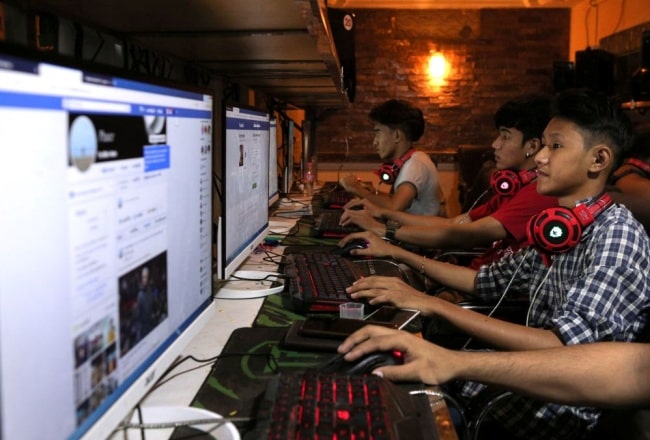
Censorship
As Myanmar gradually expands its technologies and the internet access/penetration across the country, it still deals with problems regarding censorship, with Freedom House in its 2017 Myanmar country profile stating that "conditions for the media in Myanmar have improved significantly since the country began its ongoing transition from military dictatorship toward electoral democracy.
However, the government maintains tight control over the media sector through the use of harsh defamation and other laws." Throughout this last century after internet penetration began Myanmar, the country has been noticed for its actions regarding censorship, some of which are listed below:
- Listed as selective in the political and Internet tools areas, as substantial in social, and as no evidence of filtering in conflict/security by the OpenNet Initiative in August 2012.
- Listed as an Internet enemy by Reporters Without Borders (RWB) in 2011.
- Listed as not free for both net freedom and press freedom according to Freedom House in 2017.
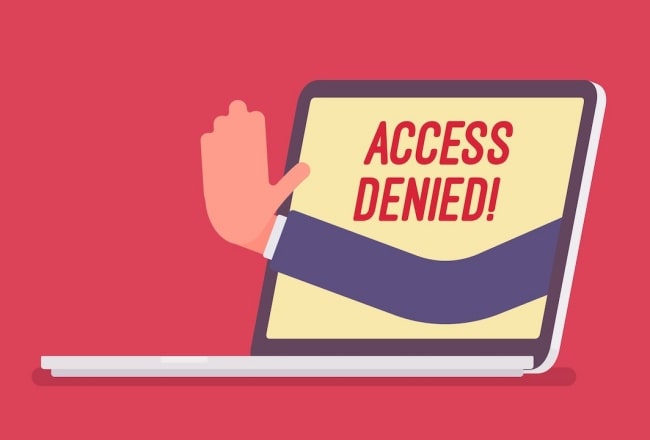
History
Prior to September 2011 the government used a wide range of methods to restrict Internet freedom, including legal and regulatory barriers, infrastructural and technical constraints, and coercive measures such as intimidation and lengthy prison sentences.
Although the authorities lacked the capacity to pervasively enforce all restrictions, the impact of sporadic implementation and the ensuing chilling effect was profound. While information circulating on the Internet is still closely monitored, reforms by the Burmese regime that began in 2011 resulted in information being more freely circulated.
Internet censorship in Myanmar was classified as pervasive in the political area and as substantial in social, conflict/security, and Internet tools areas by the OpenNet Initiative in December 2010.
Myanmar is listed as an Internet enemy by Reporters Without Borders in 2012. Myanmar's status is "Not Free" in Freedom House's Freedom on the Net 2011 report. By 2014, the status had been revised to "Partly Free".
Myanmar utilised a network specifically for domestic use that is separate from the rest of the Internet to limit the flow of unwanted information into and out of the country.
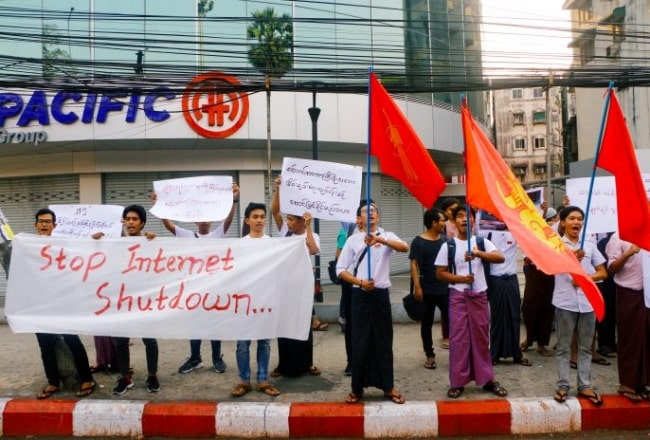
The Internet infrastructure was also controlled through total shutdowns and temporary reductions in bandwidth. During the 2007 street protests, the junta completely shut down internet connectivity from 29 September to 4 October. And state-controlled ISPs occasionally applied bandwidth caps to prevent the sharing of video and image files, particularly during politically sensitive events, such as the November 2010 elections.
Prior to September 2011 Myanmar banned the websites and blogs of political opposition groups, sites relating to human rights, and organisations promoting democracy.
The term "Myanmar Wide Web (MWW)" is a pejorative name for the portion of the World Wide Web that is accessible from Myanmar. Many sites containing keywords or phrases that were considered suspicious, such as "Burma", "drugs", "military government", "democracy", "student movement", "8888" (a reference to the protest movement that began on 8 August 1988), and "human rights" were blocked and a few still are.
Access to Yahoo! Mail, MSN Mail, Gmail, the video-sharing site YouTube, the messaging feature of the social-networking site Facebook, Google’s Blogspot, and the microblogging service Twitter were sporadically blocked. However, Voice over Internet Protocol (VoIP) systems including Skype were and are available. Fortinet, a California-based company, provides the government with software that limits the material citizens can access on-line, especially e-mail service providers and pornographic websites.
Once the leadership power of the country transferred to the National League for Democracy (NLD) and Aung San Suu Kyi in 2016, the speed of the internet stayed generally stagnant with slight improvements in regard to more phone shops and WiFi in bigger cities, but the freedom of internet use slowed down.
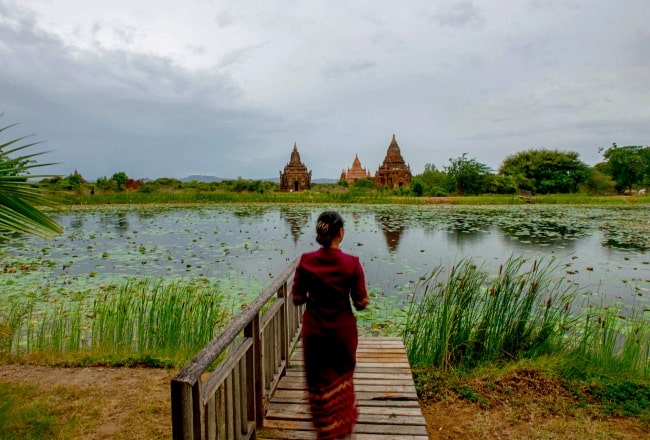
A few years prior, in 2013, the Telecommunications Law included legislation that was seen as restrictive to free speech, as seen through the incarceration of 38 people charged with violating the Telecommunications Law through online defamation since the NLD came to power.
Ever since its enactment in 2013, people have stated that the law is being used to silence anyone that speaks badly of the government, making freedom of speech on the internet difficult. According to Freedom House, the tense environment with the Rohingya refugee crisis starting in 2015 in the Rakhine state has thus created more concern for the future of freedom of speech online.
Once Aung San Suu Kyi and the NLD came into power in 2016, it was supposed that 17 journalists were incarcerated under the Telecommunications Law. Despite restrictions, the number of Internet users in Myanmar continues to grow, albeit having a low bandwidth and slow connections.
According to World Bank, "mobile and internet penetration has increased significantly from less than 20% and 10% in 2014, to 60% and 25% respectively" as of October 2017.
Many political prisoners in Myanmar were charged under the laws mentioned above. However, in the second half of 2011 as part of a larger series of amnesties the military regime released a number of journalists and bloggers. For example:

- Reporters Without Borders counted at least 15 journalists and three internet activists in detention in 2011;
- Nay Phone Latt, a blogger and owner of three cybercafes, was released in January 2012 after being sentenced to 20 years and six months in prison in November 2008 for posting a cartoon of General Than Shwe, Chairman of the State Peace and Development Council from 1992 to 2011;
- Members of the 88 Generation Students Group, Htay Kywe, Min Ko Naing, Ko Jimmy, Nilar Thein, Mie Mie, and nine others, were convicted on 11 November 2008 of four counts of "illegally using electronic media" and one count of "forming an illegal organization" and sentenced to 65 years in prison apiece, while the group's photographer, Zaw Htet Ko Ko, and other members were given sentences ranging from three to eleven years; Min Ko Naing has since been released. Other members of the group were released on 13 January 2012, as part of a mass presidential pardon for political activists.
- Freelance reporter Hla Hla Win was released in 2011 after being arrested in September 2009 and given a 27-year prison term, including 20 years for violating the Electronic Transactions Law. Her associate, Myint Naing, arrested at the same time was also released after receiving a 32-year sentence;
- Blogger Win Zaw Naing was released in January 2012 after being arrested in November 2009 and facing up to 15 years in prison for posting pictures and reports about the September 2007 protests;
- A former military officer and a foreign affairs official were sentenced to death in 2010, and another foreign affairs official was sentenced to 15 years in prison, for leaking information and photographs about military tunnels and a general’s trip to North Korea, there are conflicting reports that the death sentences were reduced to life or to 32 years in 2012;
- Journalist Ngwe Soe Lin was released in late 2011 after being arrested at a cybercafe in Yangon, was sentenced to 13 years in prison in January 2010 for working for an exile media outlet;
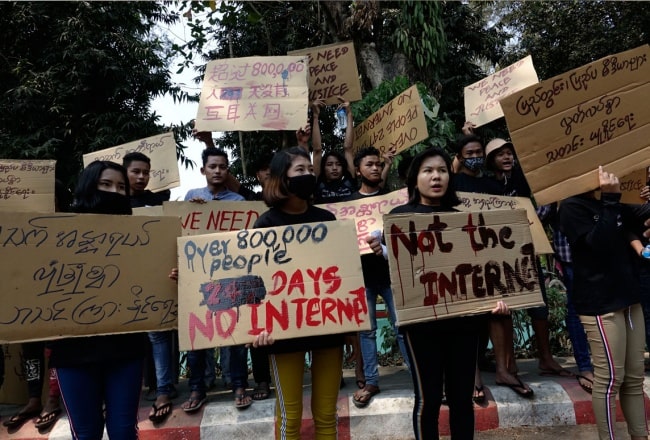
- Activist Than Myint Aung was released in January 2012 after receiving a 10-year prison sentence in July 2010 for violating the Electronic Transactions Law by using the Internet to disseminate information that was "detrimental to the security of the state"; and
- Photographer Sithu Zeya was granted a conditional release after being sentenced to eight years in prison in December 2010 for taking pictures in the aftermath of an April 2010 bomb blast in Yangon and for his affiliation with an exiled media outlet.
Recent reforms
Following decades of military rule, Burma has undergone a series of significant political and economic reforms since elections in November 2010. March 2011 saw the end of formal military rule in the country, with reformist Thein Sein becoming the country’s first civilian president in half a century.
While by-elections held in April 2012 included numerous reports of fraud, the opposition National League for Democracy, including leader and Nobel laureate Aung San Suu Kyi, won seats after contesting their first elections since 1991. In 2011-2012 hundreds of political prisoners were released and legislative changes re-establishing labour rights in the country.
Reforms have also extended to the country’s strict information control regime. Beginning in September 2011, the historically pervasive levels of Internet censorship were significantly reduced. International news sites, including Voice of America, BBC, and Radio Free Asia, long blocked by Burmese censors, had become accessible overnight.
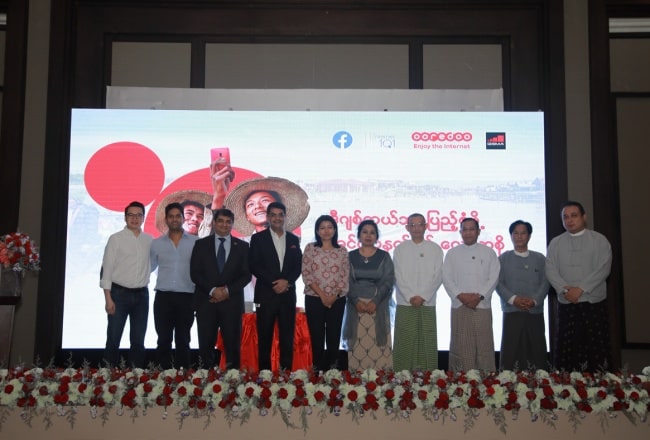
A number of previously censored independent Burma-focused news sites which had been highly critical of Burma’s ruling regime, such as the Democratic Voice of Burma and Irrawaddy, were suddenly accessible. Following the reduction in online censorship, the head of Burma’s press censorship department described such censorship as "not in harmony with democratic practices" and a practice that "should be abolished in the near future."
In August 2012, the Burmese Press Scrutiny and Registration Department announced that all pre-publication censorship of the press was to be discontinued, such that articles dealing with religion and politics would no longer require review by the government before publication. Restrictions on content deemed harmful to state security, however, remained in place.
Pornography was still widely blocked, as were content relatings to alcohol and drugs, gambling websites, online dating sites, sex education, gay and lesbian content, and web censorship circumvention tools. In 2012 almost all of the previously blocked websites of opposition political parties, critical political content, and independent news sites were accessible, with only 5 of 541 tested URLs categorised as political content blocked.
In a September 2012 speech to the United Nations General Assembly, Burmese President Thein Sein described the country as having taken "irreversible steps" towards democracy, a speech broadcast on state television for the first time.
As significant as they are, the impact of these reforms may be less than expected considering only 0.3 percent of Burma's population has Web access, outside of Burma's largest city, Yangon, few can read English.
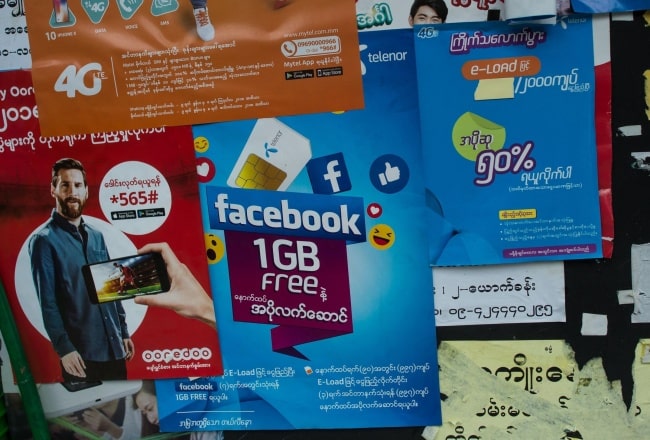
Laws
Laws regulating the Internet include the Computer Science Development Law (1996), the Wide Area Network Order (2002), and the Electronic Transactions Law (2004), while the Printers and Publishers Registration Act (1962) regulates the media. These laws and associated regulations are broadly worded and open to arbitrary or selective interpretation and enforcement.
The Electronic Transactions Law covers "any act detrimental to"—and specifically "receiving or sending and distributing any information relating to"—state security, law and order, community peace and tranquility, national solidarity, the national economy, or national culture. Violators face fines and prison terms of 7 to 15 years.
The importing and use of a modem without official permission is banned, with penalties for violations of up to 15 years in prison. Harsh prison terms and selective enforcement encourages self-censorship. However, expression in online environments such as comment features where posters can remain anonymous remains relatively free.
These laws are still in place, and authorities had promised to adopt a media law that will put an end to censorship back in 2012 in addition to revising or repealing the Electronic Act and emergency rule.
In January 2013, the new media law was not in place and there was some concern that the country could backslide and return to the repressive tendencies of the past, which ended up happening later on in the year with the 2013 Telecommunications Law, which has been considered a breach of freedom of speech online.
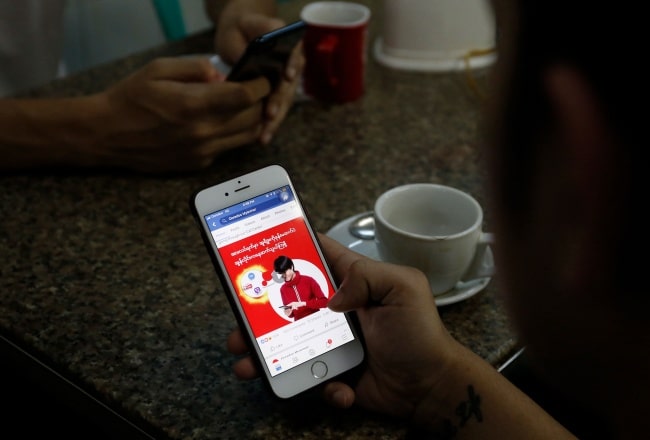
While the government of Myanmar amended the 2013 law slightly in August 2017, including an amendment that "permits judges to release people on bail, allows only those directly affected, or with permission from those directly affected, by the offense to press charges, and reduces the maximum prison sentence to two years” for crimes under article 66 of the law, the government did not change anything about article 66(d), which is considered a "highly controversial clause that restricts freedom of speech."
Censorship circumvention
The use of Internet censorship circumvention methods was officially banned by the military government; the Myanmar ISPs blocked many bypass and proxy websites, but were unable to block all circumvention methods. With the removal of blocking of web sites after 2012, the need for proxies was reduced and therefore the need to block them was also removed.
Cybercafes were required by law to keep records on their customers’ activities and provide police access to the records upon request. However, many cafes do not systematically enforce such monitoring, often assisting their users in circumventing censorship instead. In response the government increased surprise inspections of cybercafes, cafes posted signs warning users not to visit certain websites. Licensing law instructed cybercafes to install CCTV cameras and assign at least four security staff to monitor users.
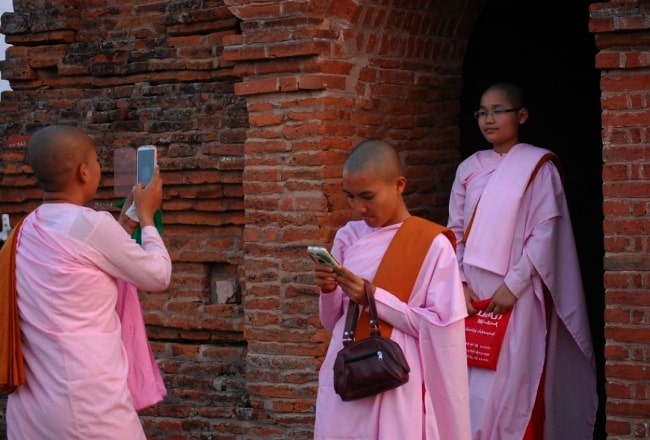
Buying a local SIM Card in Myanmar
The falling prices of prepaid cellphone access in Myanmar brilliantly demonstrate competition in action. In the early aughts, buying a cellular SIM in Myanmar cost $3,000 in 2001, and $250 as late as 2013. (Even then, they were still so rare that you needed to win a lottery to get one.)
Fast forward to July 2015, when two SIM cards cost about $4 to $6 apiece and gave you the equivalent of 1 GB internet data to boot.
Before 2013, the state-owned Myanmar Post and Telecommunication (MPT) had a stranglehold on cellular networks all over Myanmar. MPT soon got plenty of competition from three foreign upstarts: the Qatar-based Ooredoo, the Norway-based Telenor and the Vietnam-based Mytel. Good news for anyone desperate to avoid sky-high roaming charges in Southeast Asia.
So when you fly into one of the country's two main international airports, you'll find kiosks for all four prepaid SIM providers waiting for you at the arrival concourse. Even when you walk out onto the streets, you will find hawkers selling them on almost every corner.
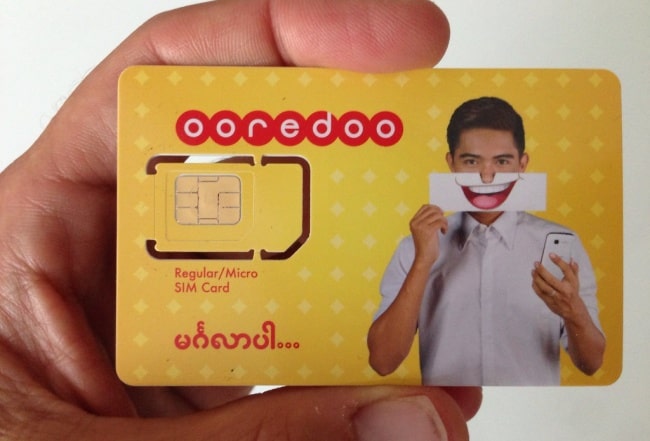
Who are the main providers?
That said, there are four main telco providers in Myanmar: Myanmar P&T (MPT), Ooredoo, Telenor, Myanmar National Tele & Communications (Mytel). Locals and travelers use SIM cards from all four networks, and the networks can be trusted regardless of the plan you choose. According to OpenSignal’s coverage map, Cambodia has strong network coverage around Phnom Penh and other main cities and towns. Other areas can be weak, and in some country areas, it can be difficult to find a signal at all.
Where to buy a SIM Card in Myanmar?
That said, you can buy a prepaid Myanmar SIM card as soon as you arrive at any International Airport or at a phone shop in the city. These shops may just be a small building offering a few phones and phone cases but, in most cases, will have a variety of SIM’s on offer.
In the Yangon and Mandalay arrivals area, you will find kiosks for the three main service providers.
Note: Make sure your phone is unlocked before you leave home.
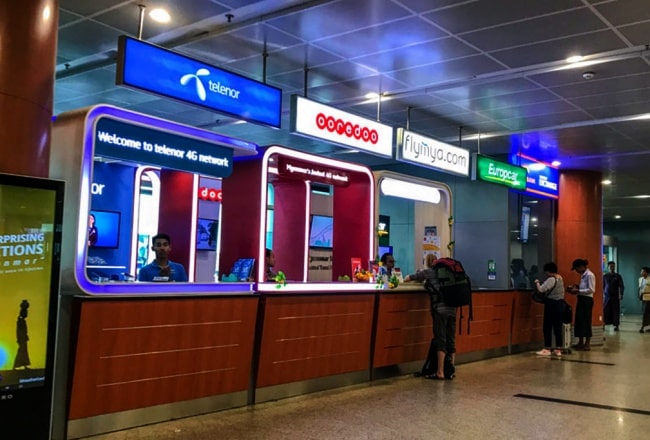
What Prepaid Cellular SIM Should You Buy in Myanmar?
Which one do you pick? We've listed the four contenders and considered their pros and cons.
Editor's note: prices are subject to constant change; for the most current pricing on each prepaid product, please visit their official sites.
MPT: For Near-Nationwide Coverage
- Where to get a SIM: Available in official stores, smaller shops or anywhere displaying the MPT logo.
- Where to top up: Supermarkets, small shops or any street vendor displaying the MPT logo.
- Cell network: 2G/3G/4G.
- ID Required: Yes.
- Bands/Frequencies: 900MHz (2G & 3G), Band 1 (4G).
The former monopoly holder of cellular access in Myanmar, MPT is still government-owned and military-controlled (which may deter responsible travel practitioners from buying their services). But owing to its being the first on the scene, MPT has the widest cellular network in the country.
Some habits are hard to break, though: MPT charges the most out of all three providers, but its Internet service hardly justifies the higher cost.
If your itinerary includes trips somewhat distant from the cities of Mandalay, Yangon, and the touristy town of Bagan, consider buying an MPT prepaid SIM if you want uninterrupted text and call access on your cell phone.
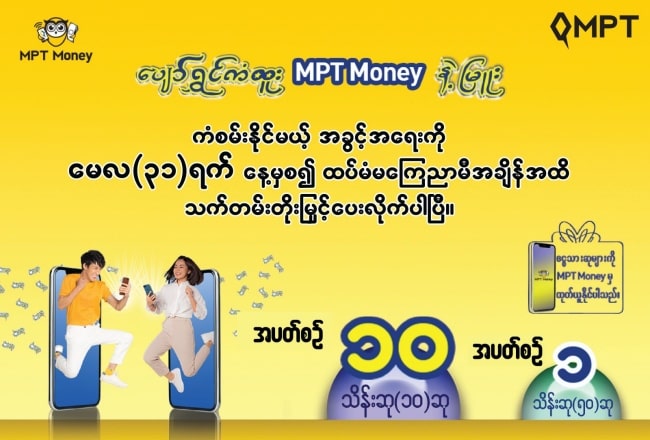
Ooredoo: For the Fastest Internet in the Cities
- Where to get a SIM: Available anywhere displaying the Ooredoo logo, which will be almost every shop or vendor.
- Where to top up: Anywhere displaying the logo.
- Cell network: 3G/4G
- ID Required: Yes
- Bands/Frequencies: 900MHz (3G), Band 1 (4G).
At the time your correspondent visited Myanmar, Ooredoo's main pitchman was a shocked-looking teenager staring aghast at a smartphone screen where, presumably, something was being downloaded at breakneck speeds. Ooredoo pitches its Internet more than its voice services, and it's true: Ooredoo has one of the fastest 3G speeds in the country.
The advertising leaves out the fact that Ooredoo's service quickly vanishes the minute you venture beyond the cities or major airports (my signal blipped out a few miles away from Heho airport headed to Pindaya). This may already have changed by the time you read this, as I passed by Ooredoo's cellular tower under construction in downtown Pindaya the next day.
If Internet access is important to you, then get an Ooredoo SIM card. It included free 1GB Internet access on top of the package I'd purchased, for a total of 2GB! But it only had a connection in Yangon, Bagan, and Mandalay. Inle Lake and Pindaya, sadly, were dead zones.

Telenor: For the Cheapest SIM Card
- Where to get a SIM: Available on almost every street corner but it is best to visit an official store for registration.
- Where to top up: Available anywhere displaying the Telenor logo.
- Cell network: 2G/3G/4G.
- ID Required: Yes.
- Bands/Frequencies: 900MHz (2G & 3G), Band 1 (4G)
Telenor was my fall-back SIM in Pindaya when I was panicky from going a full 24 hours without talking to my family back home. I appreciated their ample coverage in Pindaya, along with the fact that their prepaid SIM was also low-cost.
Unlike Ooredoo, Telenor focused more on wider coverage straight out of the gate; they've already overtaken Ooredoo in cellular coverage, despite having launched later. Their Internet access is OK, in my opinion, although it's a little more expensive than Ooredoo's despite their slower download speeds.
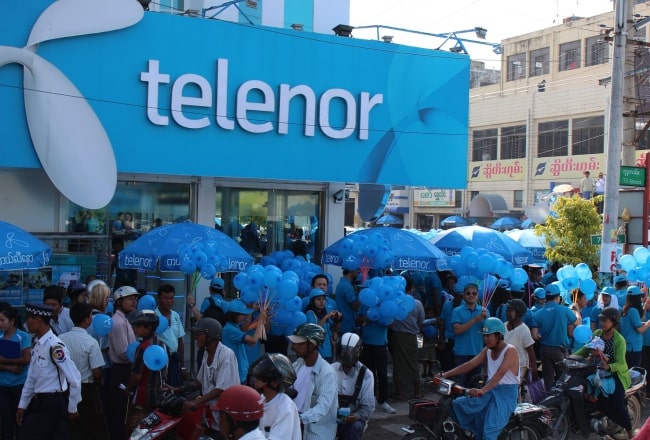
MyTel: Future Potential
- Where to get a SIM: Available in official stores.
- Where to top up: Anywhere displaying the MyTel logo.
- Cell network: 2G/4G
- ID Required: Yes.
- Bands/Frequencies: 900MHz & 2100MHz (2G), Bands 1 & 8 (4G)
MyTel opened its doors to customers in 2018 and is a joint effort between the Vietnamese Viettel and a group of local investors. Whilst the coverage is not great at the moment, the fact they are half owned by Viettel suggests they will be an operator to look out for in the future.
To not make the same mistakes as Ooredoo but still get their network up and running quickly, MyTel skipped implementing a 3G network. Instead, focusing on building a solid 2G infrastructure and then upgrading it straight to a 4G network.
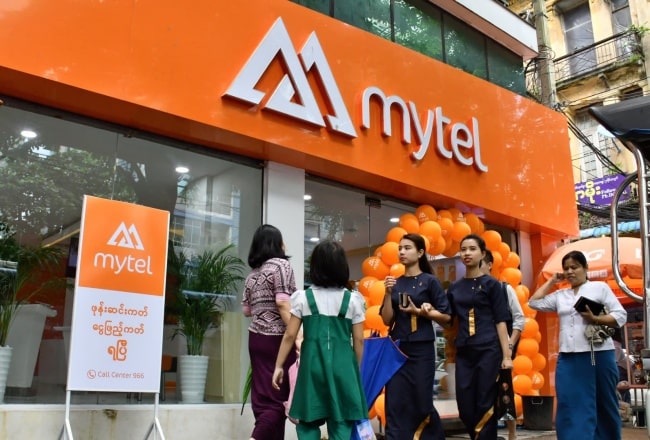
Do What the Locals Do: Buy More Than One
Just like in Cambodia, it is not uncommon to see people with multiple SIM cards, so they always have a connection no matter where they are. Thanks to the low price of SIM cards in Myanmar, it is perfectly reasonable for travelers to do the same as locals and carry multiple SIMs depending on how many provinces they plan on visiting.
You can use the coverage maps on each network providers website (these sites do not always work) to see who will give the best signal in the areas you are planning to visit but be warned, these are often the best case scenarios and do not always prove to be that accurate. Your best bet is to see which SIM is most commonly available when you arrive at your destination and pick up one of those. After all, if the locals are buying them then they must work in that area!
To conclude
It is fairly cheap and popular to have internet access in Myanmar.
For our travelers, we recommend you buy a Portable Mobile Wi-fi Router, with which you can buy only one SIM Card and share the Wi-fi internet with your travel mate on the go.
In the urgent case, if you do not have the Wifi router, you can use internet tethering on your mobile phone to use the internet on your computer or share the internet with your travel mate.
Wherever you have connection, you can use Skype or WhatsApp to call to your family without all the hassle of learning about exit code or country code to dial your friends’ numbers at home.
Hope that the article help you have more information about the communication system in Myanmar. If you need the most updated information, feel free to CONTACT US at your own convenience.


